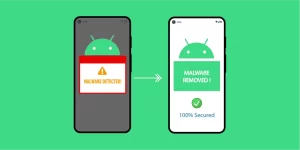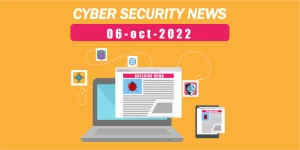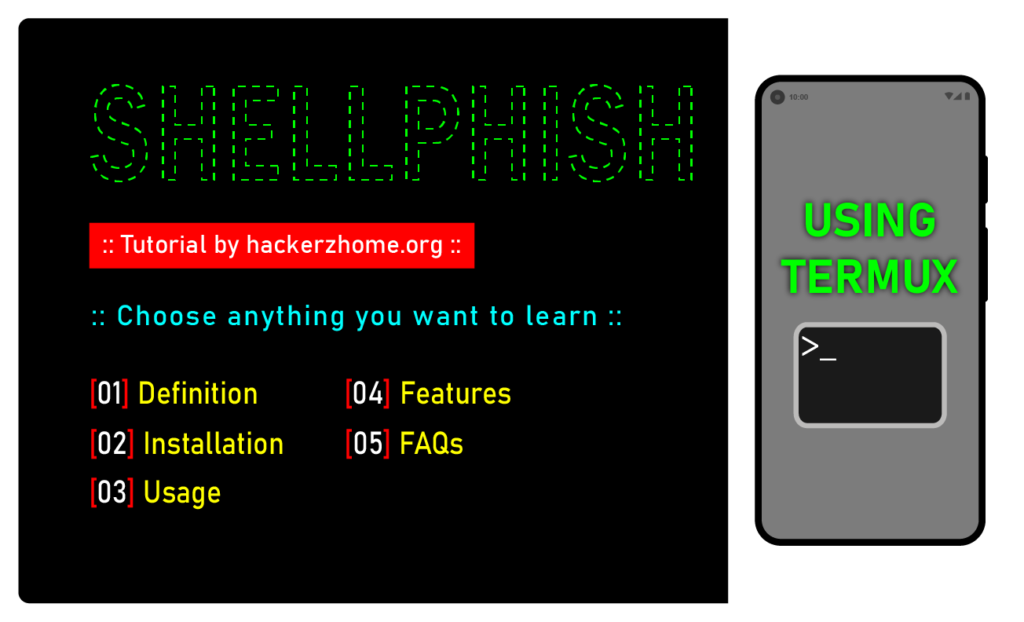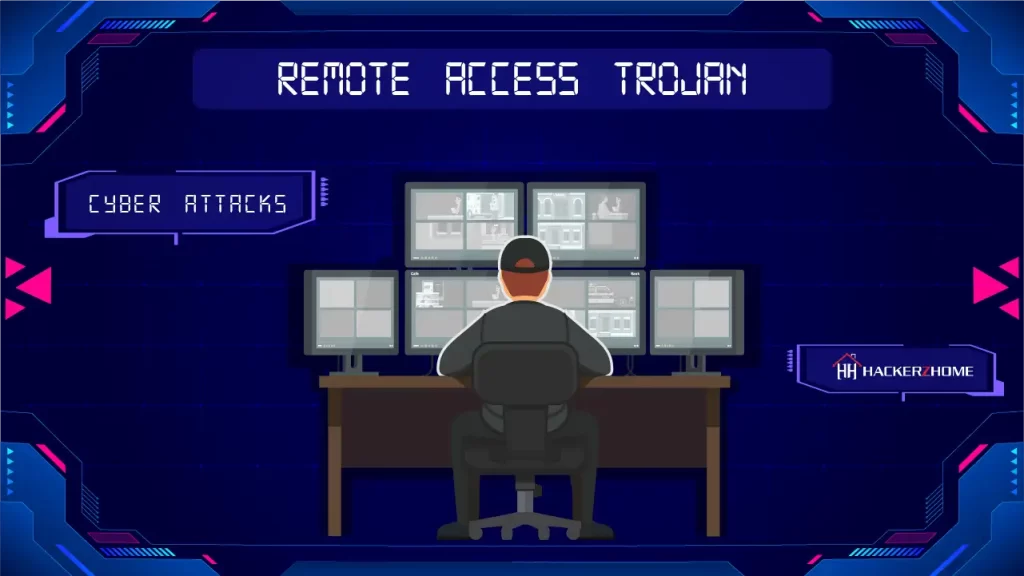Introduction
As most of us have seen in the news, phishing emails are an unfortunately common occurrence in the digital world, especially during the COVID-19 pandemic. We all know how dangerous a phishing attack can be, and there are plenty of ways to do it, as it has many types. But people often confuse spear phishing with phishing. Spear phishing and phishing are two specialized forms of cyber deception that attackers may use to gain access to confidential data or hijack systems, so it’s essential to understand the differences between the two and how to avoid becoming a victim. In this post, we’ll break down spear phishing vs phishing so you can be empowered to know what to look for and protect yourself from malicious actors.
Quick Overview: Spear phishing vs phishing
Phishing is a more general approach that targets a larger audience, whereas Spear phishing is an email or electronic communications scam targeted toward a specific individual, organization, or business. Both are scams that attempt to steal personal data or financial information.
Table of Contents
What is Phishing?
Phishing, in a nutshell, is the practice of using social engineering techniques to deceive unsuspecting individuals into revealing sensitive information such as passwords and credit card numbers. This type of cyber attack is typically carried out by malicious actors via email or other forms of digital communication sent to potential victims.
At its core, phishing involves tricking people into handing over confidential information through false pretenses. It does this by spoofing the identity of a legitimate sender — for example, an email from your bank asking for verification after a software update. The goal is to steal personal data, such as login credentials, payment cards, and more.

But phishing isn’t always about monetary gain: it can also be used to infect networks with malware or leverage confidential information for business advantage. In addition, phishing can sometimes be politically motivated, aiming to manipulate opinion through propaganda or sabotage opponents’ reputations.
On the one hand, there are those who argue that phishing should be banned altogether, as it violates people’s right to privacy and safety online. On the other hand, many argue that if done correctly, it can help protect users from falling victim to credential theft and certain types of malware attacks while also providing essential feedback that organizations need when building and maintaining their security systems.
Ultimately, however, phishing remains a widely used criminal activity that has caused considerable harm to businesses and individuals alike. By understanding how phishing attacks work and taking preventive measures against them, organizations can reduce the risk posed by these threats.
With this in mind, let us now take a closer look at how exactly phishing attacks work and why they remain one of the most effective methods for stealing confidential data from unsuspecting victims.
How Phishing Attacks Work
Phishing attacks are a type of cyberattack in which attackers attempt to gain access to sensitive information by deceitfully presenting themselves as trustworthy or familiar entities. These attacks exploit an individual’s natural inclination to trust, as well as vulnerability to being manipulated by social engineering. Phishing attacks are typically initiated through email messages that appear to be from legitimate organizations or businesses, but they can also take the form of malicious links spread through text messages, phone calls, snail mail, and digital ads.
The main goal of phishing intent is to acquire sensitive information such as usernames, passwords, credit card numbers, and bank account information. Attackers must first get the user to click on a link associated with the malicious URL or email address. The user is then prompted to divulge their credentials on a spoof website that looks like it belongs to a genuine organization whose brand is being spoofed.
In some cases, attackers may seek to steal money directly from their victims by creating fake invoices or other automated payment methods.
Check out our youtube video on “Phishing and their types” to know how it’s done exactly.
Phishing attacks have become increasingly sophisticated in recent years due to advances in technology and the increasing capability of attackers. As such, organizations must remain vigilant when it comes to educating users about the dangers of phishing attempts and the importance of maintaining secure authentication practices.
Now that we understand how phishing attacks work, so let’s explore what sets them apart from another type of attack called spear phishing in the next section.
What is Spear Phishing?
Spear phishing is a targeted cyber attack where malicious actors send a specially crafted email, text message, or online post to deceive potential victims. Spear phishing is a type of targeted phishing attack because it typically involves thoroughly researched information about the intended victim, making it much more successful than traditional phishing scams. Unlike many traditional phishing attacks, which are sent in bulk and are typically easy to spot, spear phishing targets a specific individual using personal data that has been collected from public sources such as social media accounts or company websites. This step makes the attack even more difficult to detect since there is usually an element of personalization involved.

The debate concerning whether or not spear phishing should be considered distinct from regular phishing lies in the increased sophistication of spear phishing compared to ordinary phishes. Advocates argue that spear phishing is more advanced than other forms of cyber fraud, as it carefully considers details about potential victims based on their online presence prior to launching any attempts at infiltration. Opponents point out that both are intended to swindle unsuspecting people regardless of the level of research that goes into each attack.
Regardless of one’s opinion on the matter, it is clear that users need to understand the differences between basic phishing techniques and spear-phishing in order to mitigate their risks when engaging with unsolicited emails and messages. The next section will focus on how spear-phishers target vulnerable users and how best to protect yourself against them.
Highlights
Spear phishing is a type of targeted phishing attack where malicious actors use personal data to craft messages that are tailored to each potential victim. Spear phishing is considered more sophisticated than regular phishing due to the level of research involved, but ultimately both aim to swindle unsuspecting people. It is important for users to understand the differences between basic phishing techniques and spear-phishing in order to protect themselves against these attacks.
How Spear Phishing Targets Vulnerable Users
Spear phishing, an evolved form of traditional phishing attacks, specifically targets a vulnerable user by using information gathered through social engineering. It’s designed to take advantage of human nature by exploiting our natural inclination, as consumers, to trust where there is familiarity. With enough data gathered or purchased through malicious actors, spear phishers can create emails or messages that look legitimate and diminish the chances of raising suspicion. The attacker can even go as far as making the message appear to come from someone the victim knows – like a colleague, a relative, or someone in authority – thus significantly increasing the likelihood that the recipient will click on the malicious link or download the attached files.
Proponents of spear phishing argue it allows cyber-criminals to collect valuable and accurate information from unsuspecting users, but opponents suggest it puts innocent people at risk of having financial accounts and personal data exposed. Moreover, it can be used to ‘phish for credentials which are then used for identity theft or illegal activities.
Despite these security concerns, spear phishers continue to use this attack method successfully because technology gives them access to powerful resources with which they can track potential victims’ behavior and interact with them in ways that appear authentic.
It’s clear spear phishing is becoming more common, and organizations should ensure they’re aware of this type of attack so they can protect themselves from becoming a target. The next section examines how to identify and protect against different types of phishing attempts.
How to Identify and Protect Yourself Against Phishing
Understanding how to identify and protect yourself against phishing is of utmost importance in this digital age. Phishing messages can be sent out via a variety of mediums, including emails, text messages, and social media posts. These messages could appear to be sent from legitimate organizations, with the goal of obtaining personal information such as passwords or bank account numbers.
A few key signs that a message may be phishing include:
- It requests personal information (including passwords, usernames, and bank/credit card details);
- The sender’s address is unfamiliar or suspicious;
- Contains spelling errors, unusual fonts, or strange formatting;
- Pressures you to act quickly – e.g., by informing you that an immediate response is required;
- Claims to represent a government agency or legitimate organization when they do not;
- Include requests for payment via wire transfer or other means.
It is important to note that it may be difficult for the layperson to distinguish phishing attacks from legitimate messages; however, there are steps users can take to protect themselves from potential security threats.
- The first step is to use strong passwords when creating online accounts. Passwords should not include words that can be easily guessed and should consist of an unpredictable mix of lowercase and uppercase letters, numbers, and symbols.
- Additionally, two-factor authentication should also be used whenever possible to make it even more difficult for attackers to gain access to accounts.
- Finally, if you receive a suspicious message via email or any other method, do not click on links or provide any personal information – first, confirm the legitimacy of the message with the institution sending the request.
Understanding how to identify potential phishing scams is just as important as knowing how to protect yourself against them.
Conclusion
Phishing and spear phishing are both malicious cyber-attacks; despite the similarities, they have key differences which make them unique. While both use email as their primary attack vector, phishing is a generic attack that uses social engineering techniques to try to install malware or potentially steal credentials on an unsuspecting individual or group. Spear phishing, on the other hand, is a more sophisticated technique whereby the attackers perform more detailed research to find specific information about the individual or organization to craft emails designed for maximum success rate. Due to its higher success rate, spear phishing has become the go-to tool for threat actors in recent years.
Organizations must be aware of these differences and acknowledge the risk posed by each type of attack. Additionally, organizations must implement methods and technologies to protect against these attacks, such as training their employees on cybersecurity awareness and using anti-phishing software. By understanding what spear phishing is and how it differs from regular phishing, organizations can better anticipate and defend against malicious attacks that can lead to devastating consequences.
Answers to Commonly Asked Questions
How can I protect myself against spear phishing attacks?
The best way to protect yourself against spear phishing attacks is by being vigilant about checking emails for suspicious activity. Check the sender’s email address, look for typos or grammar errors, check if the links lead to a legitimate website, and always be aware of any requests for personal information.
Additionally, ensure that your computer has up-to-date antivirus protection software installed and that your network security settings are enabled. It’s also important to educate yourself about the types of spear phishing tactics attackers use and familiarize yourself with any potential red flags. Finally, report any suspicious emails you receive to your IT department right away.
What types of information are most often targeted in a spear phishing attack?
Spear phishing attacks typically target personal, sensitive data such as usernames and passwords, Social Security numbers, banking information, credit card numbers, healthcare data, and even intellectual property.
Spear phishing attacks are usually more targeted than normal phishing campaigns, which cast a wide net in hopes of maximizing the amount of information they gather. They often involve combining social engineering tactics with very specific knowledge of an individual or organization to craft malicious messages that are designed to trick victims into divulging personal information or clicking on malicious links. To increase their chances of success, attackers may use data gleaned from previous breaches to identify potential targets within an organization and craft messages that appear to come from a trusted source. It is important for organizations to be aware of the dangers posed by spear phishing attacks since even one successful attempt can lead to significant financial losses and serious reputational damage.
What are the common methods used by attackers to deliver spear phishing attacks?
Spear Phishing attacks are characterized by more targeted and personalized messages than general, unspecific phishing emails. Attackers often use methods that take advantage of personal relationships or pre-existing trust to make their attack more effective. Common techniques used by attackers to deliver spear phishing attacks include:
Social Engineering: Attackers may use publicly available information to craft realistic and highly personalized emails from people the recipient knows or trusts, making it difficult – but not impossible – for them to detect the malicious intent behind it.
Mimicking Legitimate Brands and Companies: Attackers may attempt to impersonate legitimate organizations, websites, and brands in order to appear as if they’re providing a genuine service or assisting with an important request.
Cloaking URLs in Emails: This is a common practice whereby attackers will either hide malicious links within genuine content OR cloak malicious domains with legitimate domain names via the URL in their email.
When crafting an effective spear phishing attack, these tactics can be used by attackers to create a seemingly authentic message that tricks the user into clicking on malicious links or providing personal information, which could lead to system compromise. For this reason, it’s important for recipients to remain vigilant of all emails they receive, examine the message closely for any suspicious elements, and never click on unfamiliar links.
#spear phishing vs phishing #phishing vs spear phishing











